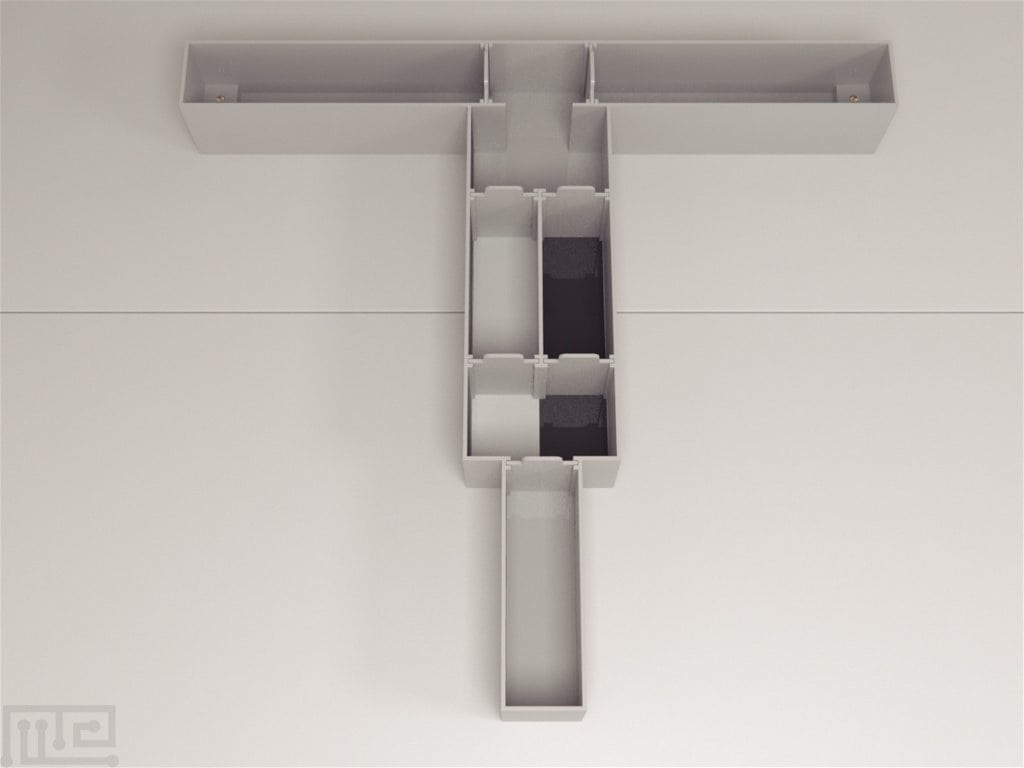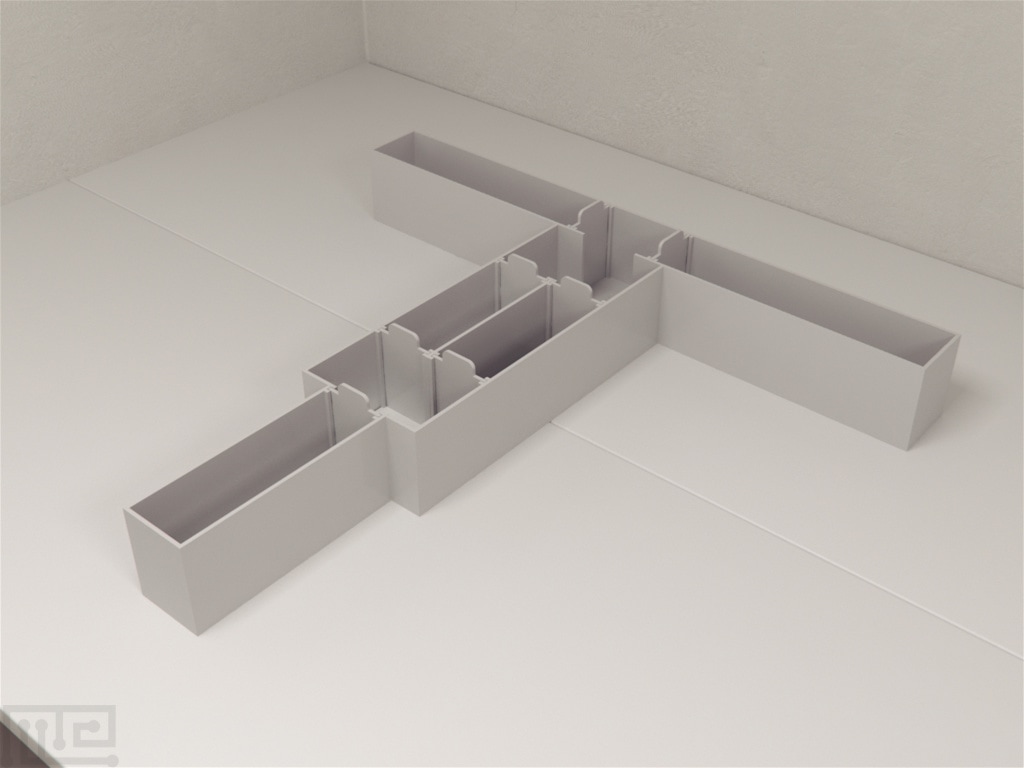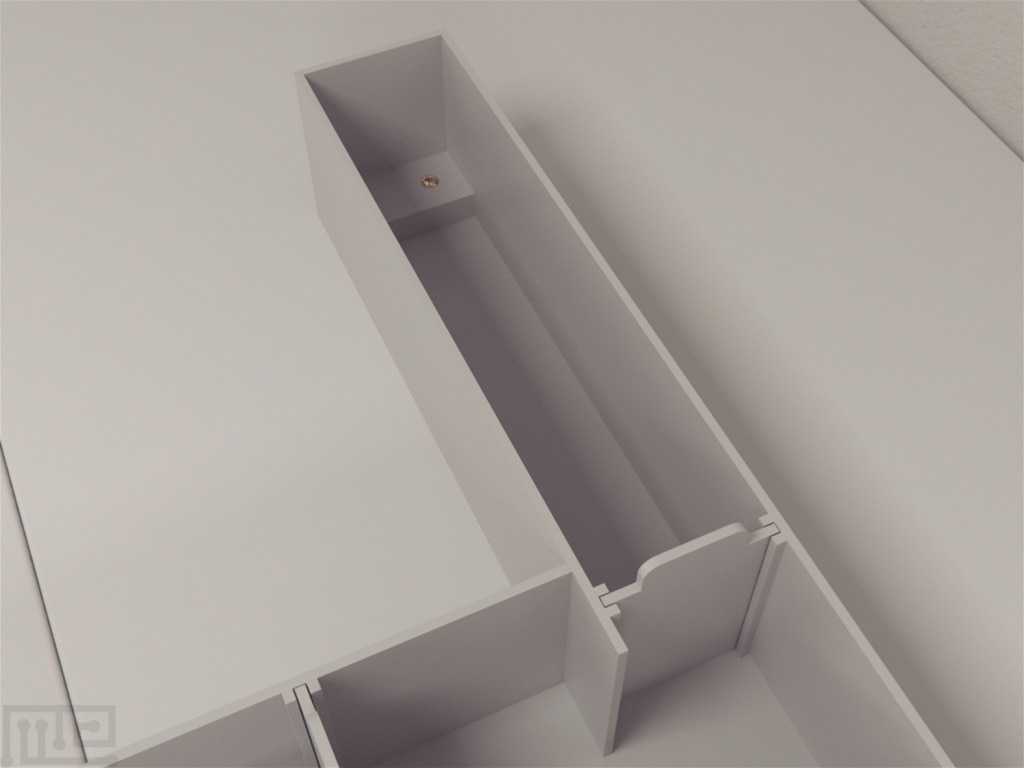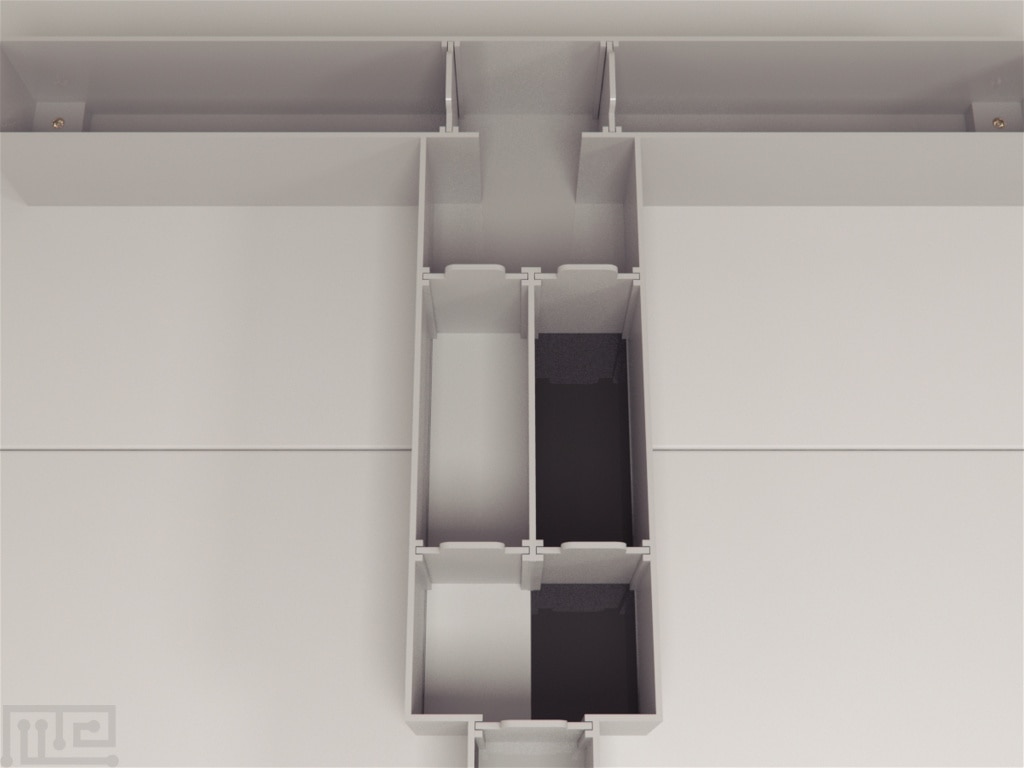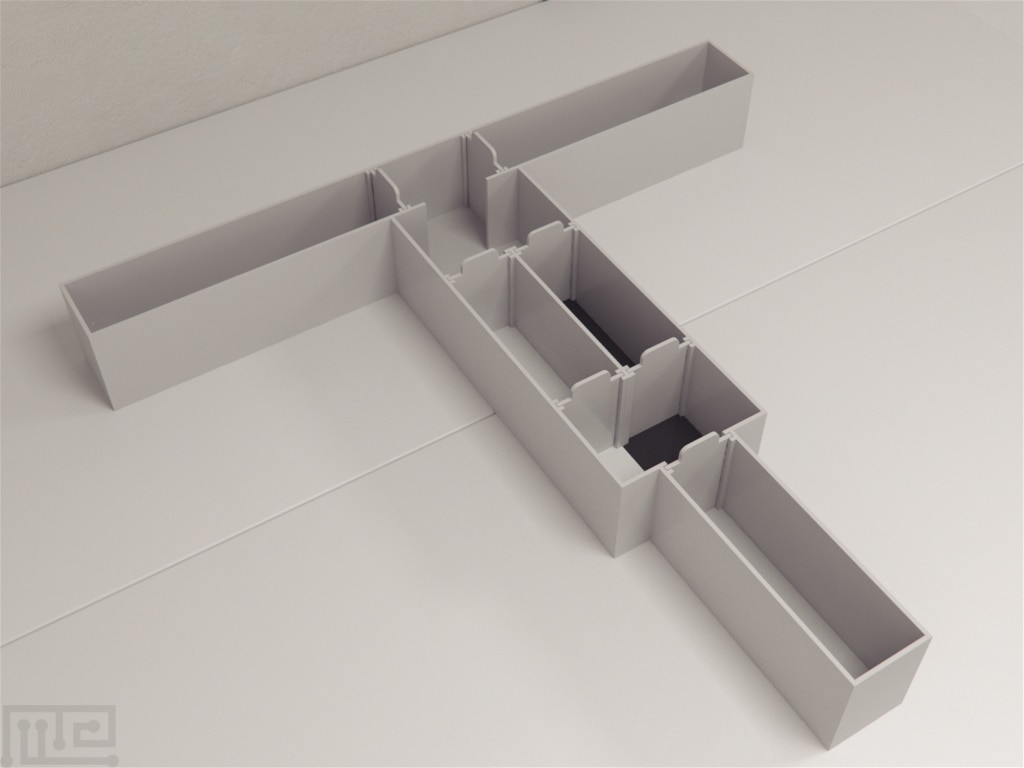Description
The Two problem T maze was originally described in the literature by Thomas and Gash (1988) and used by Granon et al (1994) in working memory investigations. Both Matching to Sample (MTS) and Non Matching to Sample Procedures (NMTS) are used in the trial. MazeEngineers offers sizing appropriate for mice and rats.
Price and Size
Mouse
$ 1890
Per Month- Stem Narrow Base Width: 6.5cm
- Stem Narrow Base Length: 19.5cm
- Wide Stem Width: 13cm
- Wide Stem Length: 40cm
- Total T length: 65cm
- Total T width: 6.5cm
Rat
$ 1990
Per Month- Stem Narrow Base Width: 10cm
- Stem Narrow Base Length: 30cm
- Wide Stem Width: 20cm
- Wide Stem Length: 60cm
- Total T length: 100cm
- Total T width: 10cm
Are you an academic scientist and creator?
Learn how your lab can tech transfer this and similar devices from your lab to industry.
Documentation
Introduction
The Two Problem T Maze is used to examine the effects of prelimbic lesions in the rat prefrontal cortex to determine how it affects working memory through assessing the acquisition and retention of nonmatching to sample (NMTS) and matching to sample tasks (MTS). Working memory is a short-term memory system which works by continuously acquiring and updating new information to carry out complex cognitive tasks. It is different from reference memory which stores information and remains constant over time. The Two Problem T Maze may be used for assessing reference memory; however, it has often been shown in the literature that prelimbic lesions in the rat prefrontal cortex do not affect this function. A comparison between the working memory and reference memory functions may be more fruitful than assessing reference memory alone. (Granon et al., 1994)
Rats differ from humans in the neurological basis of working memory as in humans working memory is the function of the dorsolateral part of the prefrontal cortex. Nevertheless, working memory works similarly in both rats and humans, and the prelimbic area of rats is considered homologous to the dorsolateral area of prefrontal cortex in humans. (Granon et al., 1994)
The experiment works by assigning NMTS and MTS tasks. In the MTS procedure, the subject must match a stimulus to one they have previously sampled, and in the NMTS procedure, the subject must choose a sample which has not been previously sampled. In the Two Problem T Maze, this is achieved by checking if the subject chooses the black insert in the maze after receiving training sessions. The choice is propagated through the design of the apparatus which presents the subject with a choice between two arms. One arm contains a black insert at the end while the other arm is equipped with a white insert. Furthermore, the ability to successfully complete NMTS and MTS tasks is compared between subjects who have prelimbic lesions and those who do not to confirm the relationship between working memory and an intact prelimbic region. Subjects are randomly assigned to be operated on to receive the prelimbic lesions after sufficient handling and acclimatization with the apparatus. (Granon et al., 1994)
Apparatus and Equipment
The maze consists of a 10 cm deep plexiglass structure composed of a start box, guillotine doors, stem choice area, stem alleys, vestibule, inserts and goal box choice area. The start box (10 x 37.5 cm) leads through a 10 cm wide guillotine door to a stem choice area (15.5 x 20.5 cm) which connects to two stem alleys (10 x 29 cm) through blockable doors. After the stem alleys, the vestibule (20.5 x 16 cm) can be accessed through the two guillotine doors. From the vestibule, a 10 cm wide door leads to the goal box choice area (16.3 x 10 cm) which is bounded by two guillotine doors. Interchangeable white and black inserts (44 x 10 x 0.5 cm) can be placed in the stem alleys during training sessions. The guillotine doors can be closed to direct the subjects towards a certain destination for training purposes during the sample runs. (Thomas et al., 1988)
Training Protocol
Before beginning the training session, each subject is acclimated to the maze. The subjects are divided into sham-operated and frontal lesion groups. The subjects assigned to the frontal lesion group undergo surgery with lesions aimed at the prelimbic area and are given a one-week recovery period postoperatively after sufficient handling and acclimatization.
Each subject is given one training session per day consisting of six trials, with each trial consisting of a sample run and a test run. There is a 5 seconds interval between the two runs, and the inter-trial interval is 3-4 minutes. During the sample run, the subject must choose the black insert. Upon choosing the black insert, the guillotine door is raised, and the subject is allowed to explore the maze freely. Upon choosing the white insert, the guillotine door is not raised. When arriving at the junction of the orthogonal arms, one of the arms is blocked in the sample run, and the subject is allowed to eat when it reaches the end of the unblocked orthogonal arm. The location of the black insert is changed from left or right randomly between trials.
In the test run, the subject is placed in the start box again and made to choose the black insert. Once the subject arrives at the junction of the orthogonal arms, both arms are opened, and the subject has to make a choice. Although food is present at both arms to prevent the subject from making a choice based on olfaction, the food is only made available to the subject upon choosing the correct arm. The subjects are divided according to NMTS and MTS tasks. In the NMTS group, the subject has to choose the arm which had been blocked in the sample run and in the MTS group the subject has to choose the arm which was unblocked in the sample run. Upon making the correct choice, the subject is allowed to eat for 10 seconds. (Granon et al., 1994)
Evaluation of Reference Memory
The reference memory of the subjects is assessed by performing visual discrimination in each sample trial run by allowing the subjects to choose between the white or black insert. However, results show that prelimbic lesions have no effect on reference memory as the results obtained for sham-operated subjects and subjects with frontal lesions were similar.
Even in cases where reference memory evaluation is not being particularly sought, evaluation of reference memory is important to ensure that the subjects are not affected by general learning disability or impairment. (Granon et al., 1994)
Evaluation of Working Memory
The working memory is assessed through the performance of the test run in each trial. In the NMTS task, correct working memory is measured by choosing the arm opposite to that visited in the previous sample run. However, in the MTS task, correct working memory is measured by choosing the same arm that is visited in the previous sample run. (Granon et al., 1994)
Sample Data
Working memory performance scores are expressed as percentages of correct responses over a block of three sessions (18 trials in total). The performance over the different trials is averaged to present the data. Reference memory scores were not presented as the experiment revealed no change in reference memory between sham-operated subjects and subjects with frontal lesions.
Data analysis includes:
- Comparison of sham-operated subjects and subjects with frontal lesions
- NMTS scores
- MTS scores
Strengths & Limitations
Strengths
The Two Problem T Maze takes advantage of the fact that the prelimbic area of the prefrontal cortex of rats is comparable to the dorsolateral area of the prefrontal cortex in humans, making the results of the experiment applicable to humans as well. The Maze allows for a qualitative and quantitative comparison of working and reference memories and helps to determine which function is affected by prelimbic lesions. The experiment also helps to reveal that apart from affecting the working memory, the effortful processing of information is also affected by prelimbic lesions.
Limitations
MTS tasks require more effortful thinking than NMTS tasks as they defy the natural tendency of subjects to alternate. This alters the parameters of assessment between the two types of tasks. In MTS tasks, subjects revealed tendencies to perseverate when given lesions before training. Additionally, the functional involvement of the prelimbic cortex in rats is poorly understood in spite of studies suggesting that this area is involved in working memory.
Summary and Key Points
- The Two Problem T Maze assesses the relationship between prelimbic lesions and working memory in rats.
- The apparatus works by presenting a T-shaped maze design which compels the subjects to choose a particular arm designated by a white or black insert to assess the decisions of the rats according to memory training.
- The experiment consists of comparing NMTS and MTS tasks conducted by the subjects who have been operated on and those subjects who do not receive these lesions through surgery.
- The working memory scores of the subjects are compared to see the degree of working memory impairment.
References
Granon, S., Vidal, C., Thinus-Blanc, C., Changeuz, J., & Al, E. (1994). Working memory, response selection, and effortful processing in rats with medial prefrontal lesions. Behavioral Neuroscience, 108 (5), 883-891.
Thomas, G. J & Gash, D. M (1988). Differential effects of hippocampal ablations on dispositional and representational memory. Behavioral Neuroscience, 102, 635-642.

